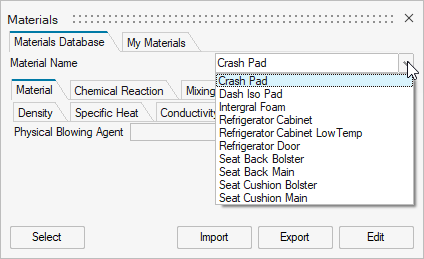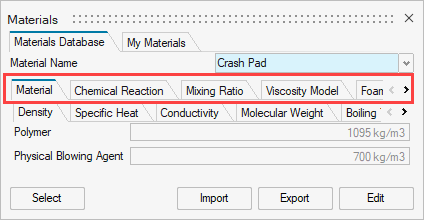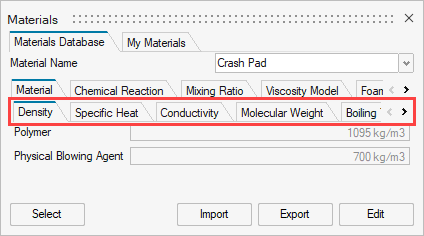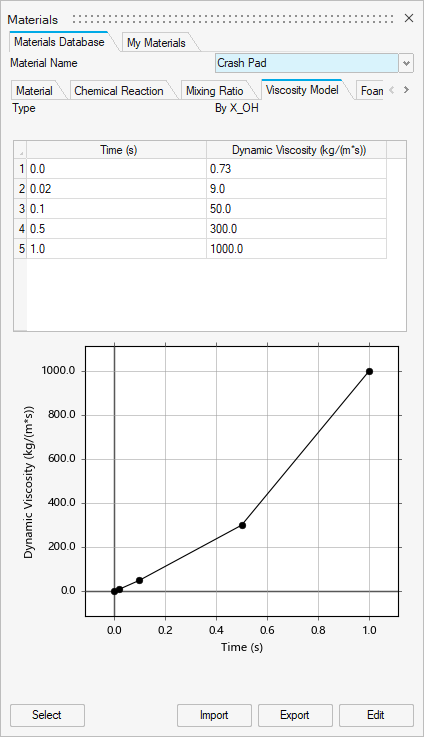Material Properties
Material properties are accessible from the Materials Database and My Materials tabs in the Materials dialog.
Materials Database Tab
The Materials Database tab lists the materials included with Inspire PolyFoam. The tab also provides access to properties that you can review and modify for each material. You can save any modified materials as new materials and access them and their properties through My Materials tab.

Material Tab

Chemical Reaction Tab
The Chemical Reaction tab includes a second row of tabs to define properties for Reaction Type, Gelling, Chemical Blowing, Physical Blowing, Gelling Ratio and CO2 Saturation. These properties include:
| Property | Description |
|---|---|
| Type | Reaction type is irreversible. |
| A | Variable related to the kinetics of chemical reaction. |
| E | Variable related to the kinetics of chemical reaction. |
| dH | Variable related to the heat generation/dissipation of chemical reaction. |
| Temperature | Temperature to start the gelling reaction. |
| Ratio | The gelling ratio is related to the critical solid fraction. When the defined ratio is reached, the foam expansion halts. |
| Saturation | The saturation level defines the initial amount of CO2 that is dissolved in the polyurethane. Saturation is related to the cream time. |
Mixing Ratio Tab
The Mixing Ratio tab includes the following material properties:
| Property | Description |
|---|---|
| Isocyanate | Mixing ratio = Polyol (100g): Isocyanate [g] |
| OH | Quantity of KOH [mgKOH/g] |
| Water | Mass of water [g] |
| NCO | Percentage of NCO in the polyisocyanate by weight [%] |
| Physical Blowing | Mass of combined physical blowing agent [g] |
Viscosity Model Tab

Foam Thixo Model Tab
The Foam Thixotropic Model tab includes three rheological models: Carreau, Bingham and Power-Law. Choose the model that is appropriate for your material and define the exponent, viscosity and constant.